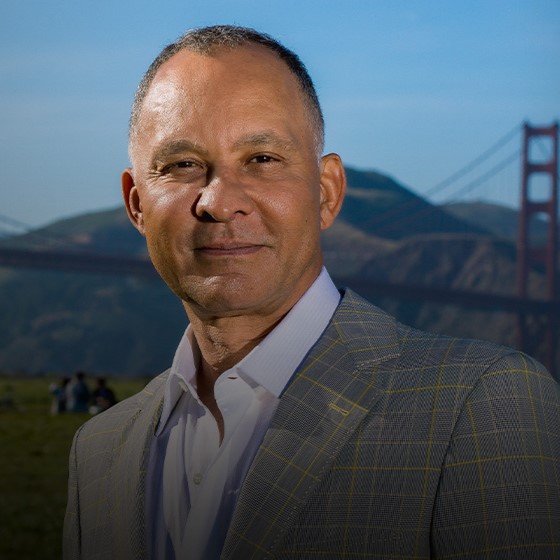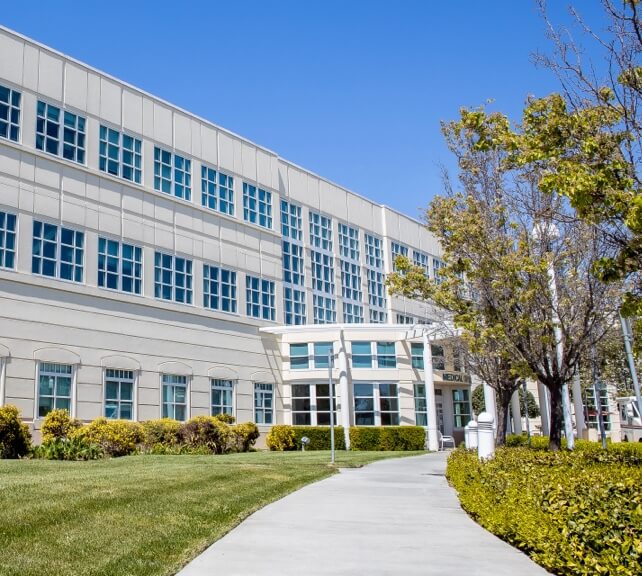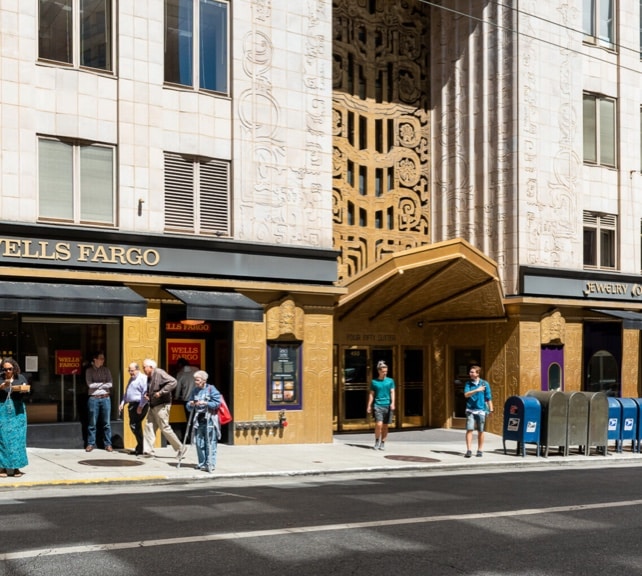Gynecomastia Surgery Recovery: Timeline, Tips, and Care Guide
Recovering from gynecomastia surgeries takes about 4 to 6 weeks and involves managing pain, swelling, and daily activities. This guide will cover gynecomastia surgery recovery and what you need to know, including timelines, pain relief tips, and how to avoid complications. By following these steps, you’ll ensure a smoother and quicker recovery.
Key Takeaways for Gynecomastia Surgery Recovery Success
- Gynecomastia surgery recovery time typically lasts 4 to 6 weeks. For optimal healing, patients must adhere to the surgeon’s guidelines.
- Effective pain management and the use of compression garments are crucial during the recovery process to support healing and minimize discomfort.
- Monitoring for signs of complications and understanding the recovery timeline are essential for a smooth recovery and achieving final aesthetic results.
Understanding Gynecomastia Surgery: Procedure and Benefits
Gynecomastia Surgery Overview: Procedure and Benefits
Gynecomastia surgery, also known as male breast reduction surgery, is a surgical procedure designed to reduce the size of overly large male breasts and create a more naturally contoured chest. This surgery involves the removal of excess tissue from the chest, glandular tissue, and fat. In some cases, the nipple may also be repositioned to a more natural location on the chest. Typically performed by a board-certified plastic surgeon, this procedure aims to minimize risks and ensure the best possible outcome for patients. By addressing excess breast tissue, gynecomastia surgery helps men achieve a more masculine chest appearance and significantly boost self-confidence.
Causes of Gynecomastia: Hormonal Imbalance and More
Gynecomastia is a condition characterized by the abnormal growth of breast tissue in men, often resulting from a hormonal imbalance between male hormones (androgens) and estrogen. Several factors can contribute to this condition, including hormonal changes during puberty, certain medications, and underlying health conditions. Normally, men have much higher levels of androgens compared to estrogen, but when this balance shifts, it can lead to the development of breast tissue. Understanding the causes of gynecomastia is essential for effective treatment, and gynecomastia surgery offers a reliable solution for those affected by this condition.
Gynecomastia Surgery Recovery: What to Expect
Recovery from gynecomastia surgery involves slowing down, adhering to your surgeon’s guidelines, and being patient. This period is vital for proper healing and achieving the best recovery time.
Recovery typically takes 4 to 6 weeks, although this varies with the amount of tissue removed. Swelling and bruising generally subside by the fourth week. Most patients require one to two weeks off from work or school to start the healing process.
Follow your recovery timeline and your surgeon’s advice closely. No method can speed up recovery; it requires time and proper care. Understanding what to expect and being prepared can ensure a smoother gynecomastia recovery.
Initial Recovery Phase: What to Expect After Gynecomastia Surgery
The period of convalescence after surgery typically lasts around six weeks, with the utmost attention required during the initial one to two days. The amount of excess skin can influence the initial recovery phase, as it may affect the surgical approach and subsequent healing process. To foster a successful recovery and mitigate swelling, it is advised that patients use bandages and dressings in conjunction with wearing a compression garment. Adopting a semi-upright sleeping position at an angle of approximately 45 degrees can alleviate any discomfort.
During the early stages following surgery, individuals may notice some tenderness in their chest area. This pain should remain relatively minor and controllable through conscientious post-operative care. Ice packs can be effective for pain relief, but they should be used with caution to prevent freezer burns.
Given that physical movement might be restricted at this time, securing help for household tasks and routine activities could prove invaluable. Promptly after the operation, commonly expected chest swelling ensues—a reminder of why adhering strictly to one’s surgeon’s directives while curtailing strenuous exertion proves crucial.
Following these suggestions while maintaining a calm and relaxed approach during the first week is essential for ensuring steady progress in your recovery. Exercising patience is crucial, as it allows your body to fully undergo the restoration and healing processes.
Managing Pain and Swelling During Gynecomastia Recovery
Managing pain is crucial for recovery. Most patients experience moderate pain in the first 2-3 days, usually manageable without extended use of painkillers. Pain tolerance and surgery extent influence pain severity. Prescription painkillers and over-the-counter options like Tylenol are commonly used. Some men will require prescription medication, while others will just need over-the-counter Tylenol.
Temporary numbness in a patch of skin on the breast is also a normal post-surgery occurrence. Patients should avoid medications like aspirin and ibuprofen during recovery, as they can complicate the healing process. Alcohol consumption should be avoided when taking painkillers, as it can interfere with the healing process.
Effective pain management is essential. Adhering to your surgeon’s instructions and using prescribed pain medication can help alleviate discomfort and allow you to focus on the healing process.
Monitoring Healing Progress After Gynecomastia Surgery
Successful recovery requires vigilant observation of the healing process. Patients receive specific post-surgical care instructions, including managing surgical incisions and following medication protocols. Adhering to these guidelines, coupled with sufficient rest and timely medication intake, facilitates recovery. It is equally critical to keep the compression garment clean.
Attending scheduled follow-up visits is imperative. They play a pivotal role in confirming that healing is progressing correctly, and allow patients to voice any concerns they may have. Should you experience symptoms such as shortness of breath or chest pains following surgery, immediate medical attention is crucial. Diligent monitoring and compliance with your surgeon’s advice are key components in achieving a smooth recuperation process.
How to Prepare for a Smooth Gynecomastia Surgery Recovery
Pre-Operative Preparation for Gynecomastia Surgery Recovery
To ensure a smooth and successful gynecomastia surgery recovery, it is crucial to follow your surgeon’s pre-operative instructions carefully. These guidelines are designed to minimize risks and set the stage for a smooth surgery recovery. Here are some key pre-operative instructions to keep in mind:
- Medication Management: Stop taking any blood-thinning medications, such as aspirin or ibuprofen, at least two weeks before surgery. These medications can increase the risk of bleeding during and after the procedure.
- Lifestyle Adjustments: Avoid smoking and excessive alcohol consumption for at least two weeks before surgery. Both smoking and alcohol can interfere with the recovery period and increase the risk of complications.
- Healthy Diet and Rest: Eat a balanced diet rich in lean proteins, fruits, vegetables, and healthy fats. Get plenty of rest in the days before your surgery to help your body prepare for the healing process. Liquid-based foods such as soups, smoothies, and Jell-O are advisable for the first few days post-surgery. After that, transition to traditional healthy meals after the initial days of recovery.
- Post-Surgery Arrangements: Arrange someone to drive you home after the surgery and stay with you for the first 24 hours. This support is crucial, as you may feel groggy and need assistance with basic tasks.
- Comfortable Clothing: On the day of surgery, wear loose, comfortable clothing that is easy to put on and take off. This will help you feel more comfortable after the surgery.
- Remove Accessories: Remove any jewelry, glasses, or contact lenses before the surgery to avoid any complications during the procedure.
Adhere to these pre-operative instructions to significantly reduce the risks associated with gynecomastia surgery and ensure a smooth recovery. It is equally important to follow your surgeon’s post-operative care instructions, including wearing compression garments and managing bruising and swelling, to ensure the best possible outcome.
Gynecomastia Surgery Recovery Milestones

Knowing your recovery timeline helps you plan and set expectations. Key milestones in the recovery process are outlined week by week. Swelling and bruising commonly occur in the first few days after surgery, and may last a few weeks. After a few days, most patients stop needing prescription painkillers.
Most men need about 2-3 weeks of rest before returning to daily activities. Recognizing these milestones helps gauge progress and adjust activities for a smooth recovery.
It is common to experience numbness in the treated area during recovery, which usually restores in time.
Most healing occurs in the first 5 weeks after surgery, which is why focusing on recovery is important.
Gynecomastia Surgery Recovery Timeline
During the first week after surgery, avoid exerting your pelvic muscles and slowly increase your everyday activities according to your comfort level. To avoid tension, refrain from strenuous exercise for up to two weeks after surgery.
Typically, swelling should be significantly reduced by the end of the sixth week after surgery. Adhering faithfully to a weekly recovery timeline helps patients stay aligned with their recovery milestones and schedule their engagements appropriately.
During the recovery period, patients are recommended to maintain proper posture to support mental recovery. Adopting a confident, upright stance can help eliminate the “gynecomastia hunch.”
When and How to Resume Normal Activities After Gynecomastia Surgery
The six-week mark typically indicates the end of the standard recovery phase, during which significant healing progress is often noticed. Most patients take one to two days off work and can return if their job doesn’t involve physical exertion. Regular exercise can generally resume at four to six weeks, but upper body and chest workouts should wait until about six to seven weeks.
Most patients can return to regular exercise and engage in strenuous activities after 6 weeks.
Avoid heavy lifting, strenuous activities and intense exercise for at least 4-6 weeks following surgery. Gradually resuming normal activities according to this timeline helps ensure a smooth and effective recovery.
Long-Term Results of Gynecomastia Surgery: What to Expect
The recovery timeline indicates that the ultimate aesthetic outcome of surgery is often apparent between three to six months post-operation. While initial alterations in chest shape can be seen within a few weeks or months, swelling subsides considerably by the fourth week’s conclusion. It may take as long as six months for all swelling to fully resolve.
Patients should recognize this period of recovery and adhere to the outlined timetable, so they can form realistic anticipations and remain patient as they await the final results of their surgery.
Most healing occurs in the first five weeks after surgery, but it takes up to one and a half years for complete healing.
Essential Tips for a Smooth Gynecomastia Surgery Recovery

To ensure a successful recovery, it’s crucial to heed your surgeon’s guidance, adopt healthy habits, and be on the lookout for alarming symptoms. Shortness of breath or chest pain could signal potential complications that require swift medical attention. To manage scars effectively, one should routinely check incision sites for any early indications of infection.
By following these recommendations and maintaining alertness to possible issues, you can reduce the risk of complications and promote a smooth path to recuperation. Following guidelines is essential for optimal results in cosmetic surgery.
Why Wearing Compression Garments is Crucial for Gynecomastia Recovery
Compression garments are designed to support the chest and minimize swelling during the recovery process. Patients are recommended to wear the compression vest for at least six weeks.
After approximately six weeks, depending on personal healing progress, individuals shift from wearing a compression garment back to regular attire. For the best possible recovery results, it’s crucial to adhere strictly to your surgeon’s advice.
Healthy Lifestyle Habits to Aid Gynecomastia Recovery
Maintaining adequate hydration helps avoid complications and enhances the look of your skin. It is advisable to consume a diet that comprises lean proteins, fruits, vegetables, and healthy fats for balance.
To ensure optimal healing and reduce potential risks, it is important to refrain from consuming alcohol and using tobacco products. Embracing a healthy lifestyle supports the body’s healing process and plays a vital role in achieving a successful recovery.
How to Avoid Complications During Gynecomastia Recovery
If you notice redness and swelling at the surgical site, which indicates a potential infection, it is imperative to inform your surgeon promptly.
Adhering to your surgeon’s post-operative instructions can lessen complications and facilitate a seamless recovery. Employing an antibacterial soap prior to surgery may also decrease the likelihood of infections occurring after the procedure.
Seroma vs. Hematoma
Seroma refers to the accumulation of clear fluid beneath the skin that can develop after surgery. It typically emerges no earlier than two weeks after the procedure. Hematoma often occurs within 24 hours after gynecomastia treatment and requires immediate medical attention. Post-operative care includes managing fluid accumulations like seromas or hematomas.
Mondor’s Disease
Mondor’s disease can occur after gynecomastia treatment, resulting in some pain and discomfort, but usually resolves itself in a few weeks.
Scar Management Tips for Gynecomastia Surgery Recovery
Managing and reducing the appearance of scars is essential for both enhancing aesthetics and boosting confidence. Scar tissue development is a natural consequence of all surgical procedures, including cosmetic surgeries. However, with proper care, the visibility of these scars can significantly diminish over time. Patients are advised to massage the treated area to help with scar tissue. This can be achieved through manual massage or by using a roller to help smooth out the area.
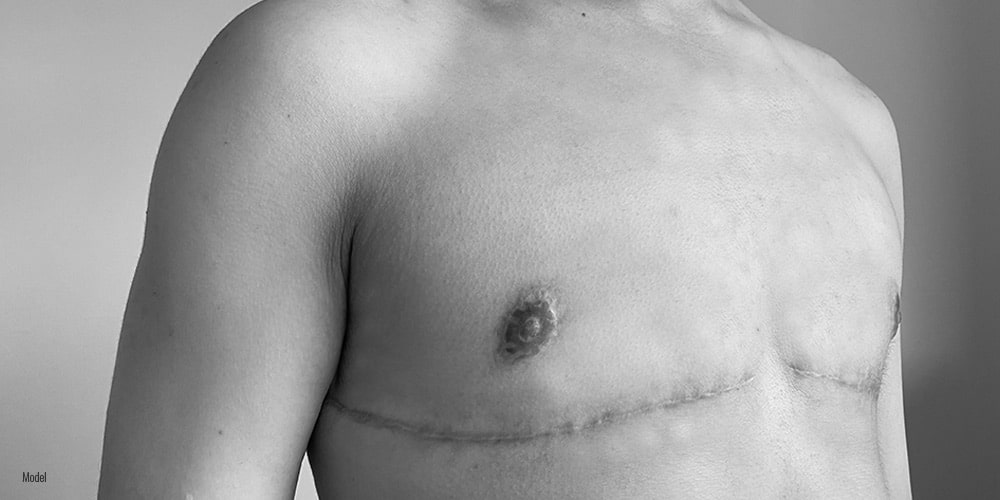
Adhering to your surgeon’s advice and employing suggested remedies is vital for managing scars, ultimately improving the outcomes of surgery.
How to Care for Incision Sites After Gynecomastia Surgery
Immediate post-surgery, patients will have bandages and dressings on their incision sites.
Keep incision areas clean and dry to prevent infection. Follow postoperative instructions and care for incision sites to minimize scarring. Surgical incisions should heal fully after four weeks, allowing bathing to resume.
Proper care for incision sites ensures a smooth recovery and minimizes scarring.
Effective Treatments to Reduce Scars After Gynecomastia Surgery
Consistent use of scar-lightening creams and silicone gels or sheets can notably reduce the prominence of scars. Professional procedures like laser therapy and micro-needling encourage skin remodeling, which progressively improves the appearance of scars.
Adhering to a regular treatment regimen, whether with topical products or in-clinic treatments, is crucial for optimal scar diminishing outcomes. By investigating these methods, individuals can successfully control and reduce their scarring.
Common Concerns and Questions About Gynecomastia Surgery Recovery
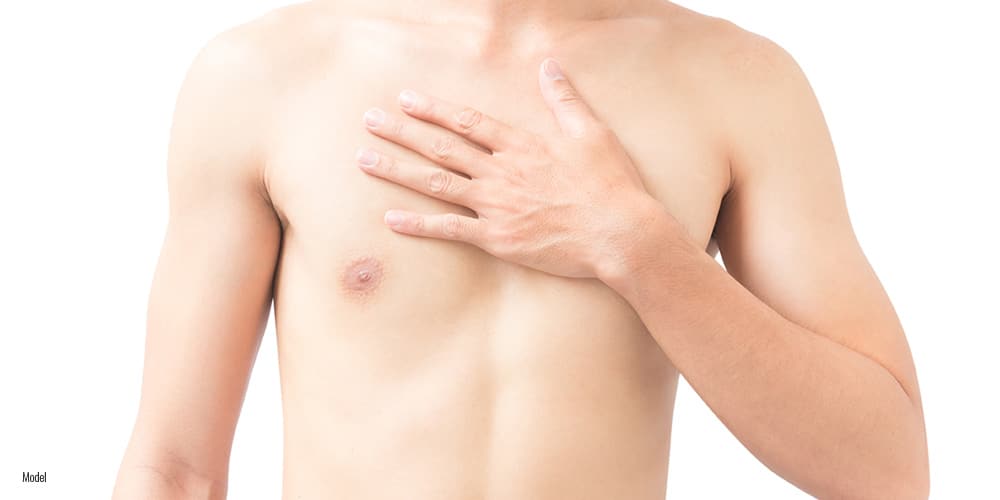
Recovery from gynecomastia surgery can bring up numerous concerns and questions for patients. It’s important to understand potential issues and how to address them for a smooth recovery experience.
Addressing common concerns helps patients feel more confident and prepared during recovery.
What If My Chest Doesn’t Look Flat?
Allow at least six months to pass before evaluating your chest’s ultimate look. The genuine aesthetic effects will be noticeable after the swelling has fully diminished. All swelling must resolve before you can truly appreciate the final results.
If your chest does not seem flat after surgery, it is crucial to give yourself ample time for recovery, so that you can differentiate between residual swelling and excess tissue. If this issue causes you worry, do not hesitate to seek advice from your surgeon. To improve the appearance of your chest, consider resistance training and increasing your protein consumption.
Can Gynecomastia Come Back?
Recurrence is rare, but can arise from hormonal fluctuations or weight gain. Maintaining a stable body weight and avoiding steroids are critical for ensuring permanent results.
Managing these factors significantly reduces the risk of gynecomastia returning and ensures lasting results.
How Will I Know If There’s a Problem?
If you encounter symptoms such as difficulty breathing, chest pains, or an irregular heartbeat, it might signal that immediate medical attention is necessary. Unrelenting pain and swelling in one leg or consistent trouble breathing could be signs of potentially dangerous blood clots. Should severe pain arise, promptly contact your surgeon via the emergency contact service.
If you have asymmetrical swelling and pain after surgery, this could be a post-operative hematoma, and you should contact your doctor immediately.
To protect your well-being, it is vital to remain vigilant for these cautionary indicators. Discuss emergencies or postoperative complications with your surgeon ahead of time to establish a clear plan for responding, and ensure you have easy access to emergency helpline information.
Patient Reviews
Gynecomastia Surgery:
Amazing experience and fantastic results! From the first consultation, Dr. Delgado made me feel like I was in good hands. He was kind and allayed my fears of surgery…and the results were truly amazing; better than any results I’d seen while researching, and by a large margin. My scars 4 months in are virtually invisible, the results look so natural, and there was very little pain during recovery. If you can book him, you won’t be disappointed.
An abundance of positive testimonials from individuals who have undergone gynecomastia treatment reinforces the significance of wearing these supportive pieces throughout their convalescence journey: many recount how, despite early discomforts associated with these items, they ultimately lead them towards successful management over enlarged male breasts and excess breast tissue conditions. Many thanks again precisely because they offer comprehensive reinforcement against additional inflammation or misshaping potential complications down the line – truly highlighting long-term advantages far surpass immediate unease!
Contact Dr. Delgado for a free in-person or virtual consultation.

If you are considering male breast reduction surgery to address excess breast tissue or have questions about the procedure, Dr. Delgado offers both in-person and virtual consultations. He is ready to answer your inquiries and develop a personalized treatment plan tailored to your needs.
Possessing board certification in plastic surgery with an emphasis on gynecomastia surgery, Dr. Delgado offers professional advice and assistance during the entire process of recuperation from excessive development of male breast tissue resulting from surgical intervention.
Gynecomastia Surgery Recovery Summary and Key Takeaways
Recovering from gynecomastia surgery requires patience, adherence to your surgeon’s instructions, and a healthy lifestyle. By understanding the key milestones, managing pain and discomfort, and following tips for a smooth recovery, patients can achieve the best possible outcomes. Remember, the final results may take time, but with proper care and attention, you can enjoy a confident and improved appearance.
References
What should I expect during my gynecomastia surgery recovery?
Frequently Asked Questions
What should I expect in terms of pain after gynecomastia surgery?
You can expect moderate pain in the first 2-3 days post-surgery, which typically subsides and usually doesn’t require painkillers after this initial period.
How long should I wear the compression garment after surgery?
To effectively support your healing process after surgery, it is advised to wear the compression garment for at least four weeks.
Following this recommendation can greatly improve the results of your recovery.
When can I return to exercise after gynecomastia surgery?
You can typically resume regular exercise six weeks after gynecomastia surgery, but it’s advisable to hold off on upper body and chest workouts until around four weeks.
This timing helps ensure a proper healing process.
How can I reduce the visibility of scars after surgery?
To effectively reduce the visibility of scars after surgery, consistently apply topical scar lightening creams and silicone sheets or gels.
This approach can noticeably improve the appearance of your scars over time.
What are the signs of complications after gynecomastia surgery?
Signs of complications after gynecomastia surgery include shortness of breath, chest pains, and persistent swelling and pain in one leg.
If you experience any of these symptoms, seek medical attention promptly.

